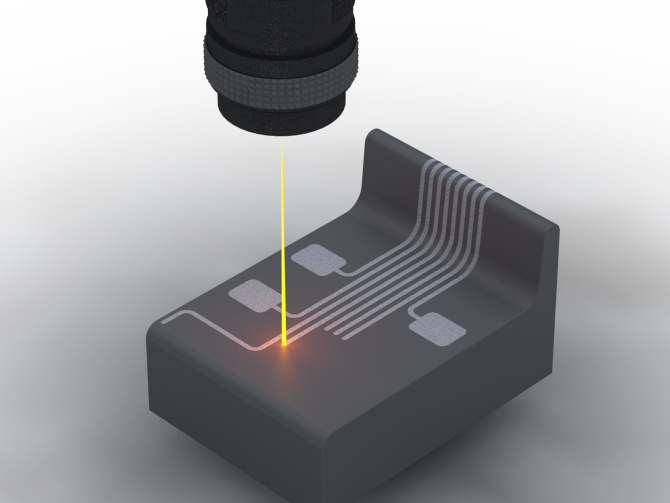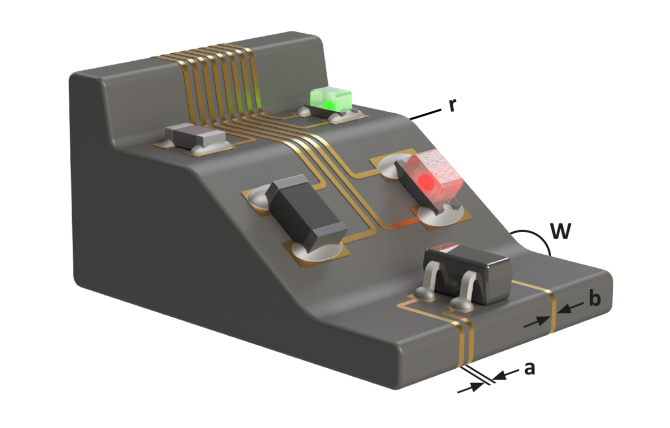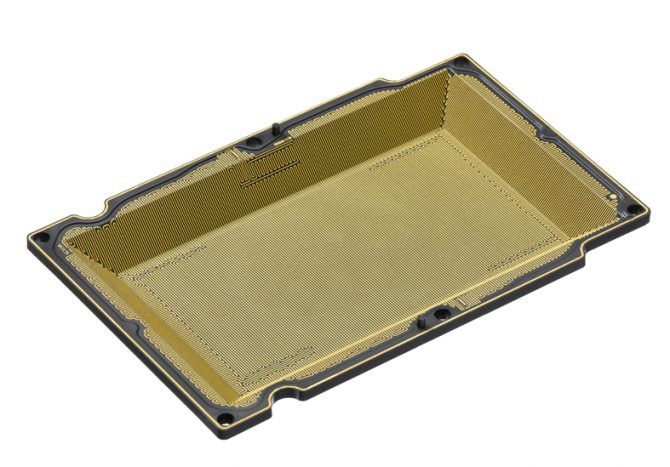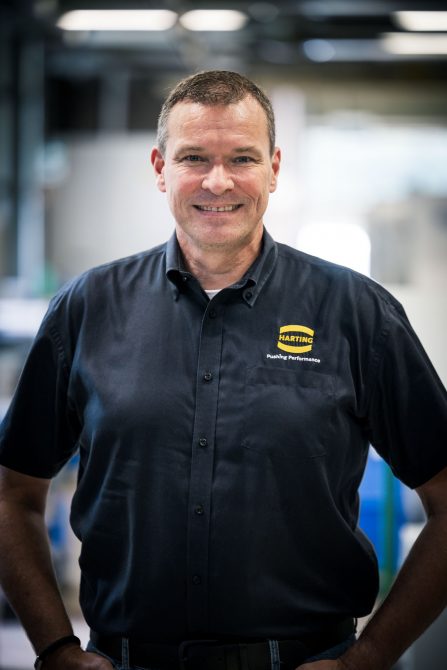Laser direct structuring (LDS) is a special achievement tale. For almost 20 several years, it has been achievable to implement digital conductor paths specifically on to plastic sections in the course of collection output. LDS permits the manufacturing of digital assemblies with flexible geometric styles. This system allows digital goods (this kind of as clever telephones, sensors or medical gadgets) to develop into even smaller and much more powerful. Automated producing processes also make this system much more economically attractive.
There is a lot less and considerably less place offered for digital assemblies, so methods are required which change conventional printed circuit boards. LDS allows further miniaturization and makes ever more complicated geometric models achievable. This is a secure and responsible method that has established by itself in excellent-critical sectors these types of as clinical technological innovation or basic safety-relevant factors for the automotive business.
LDS approach allows 3-dimensional assemblies
Direct laser structuring permits 3D-MID (Mechatronic Built-in Products) assemblies to be made. When utilizing 3D-MID, electronic components can be equipped specifically onto a three-dimensional foundation overall body, devoid of circuit boards or connecting cables. The base overall body is produced working with an injection moulding approach, whereby the thermoplastic material has a non-conductive, inorganic additive.

The structure of the conductor path is applied working with the LDS procedure.
LDS permits digital assemblies to be made in adaptable geometric shapes. Sensible phones, listening to aids and good watches are turning out to be lesser and far more potent thanks to this process. Supply: Harting
The additives in the substance are “activated” by direct laser structuring so that the plastic content can accommodate the electrical conductor paths. The laser beam writes the places intended for the conductor paths and results in a micro-tough structure. The unveiled metal particles form the nuclei for the subsequent chemical metallisation. In this way, the electrical conductor paths are applied to the parts marked by the laser. The other parts of the a few-dimensional base system continue being unchanged. The plastic ingredient can then be assembled in common SMD procedures identical to a conventional PCB. It is also suitable for soldering in a reflow oven.
Versatile software of laser technological innovation
As 1 of the major suppliers of 3D-MID elements outside the house of Asia, HARTING makes use of large-functionality laser devices for the LDS approach, with a few lasers doing the job in parallel, each and every offset by 45 degrees. Thanks to an further axis of rotation, components can be processed by the laser at the same time from all sides (360 degrees). This know-how permits flexible geometric designs, this sort of as reflector shells or LED lights, to be created. Irrespective of the minimum conductor path thickness of 16 to 20 μm, the conductor paths are continue to acceptable for demanding automotive factors or for programs with currents up to 10 A – for illustration for heating coils in cameras which are employed to avoid the optics from fogging up

Minimum amount distances in between the conductor paths (a): 50 – 150μm. Bare minimum width of the conductor paths (b): 50 – 150μm Radius (r): .2mm. Source: Harting
Recurrent variations throughout the electronics growth section or new factors with modified dimensions can guide to costly changes all through traditional PCB creation. The laser layout, in distinction, can be adapted pretty flexibly by making use of the parameters of the laser’s manage software. No variations in the injection moulding are demanded for this.
The production of prototypes employing LDS is also much easier as opposed to standard processes. HARTING can deliver the plastic foundation entire body applying LDS-suitable substance and 3D printing. Injection moulding can also be utilised with inexpensive prototype applications.
New trends in the LDS method
Quite a few elements of LDS technological innovation have been improved and even more produced over the past few many years.
- The functioning location of the laser has been enlarged from 160 x 160 x 80 mm to 200 mm x 200 mm x 80 mm, as a result enabling a larger packing density and the processing of even more substantial factors.
- The performing pace of the laser can be doubled to 4 m/s by optimizing the servo models and mirrors which tutorial the laser beam, thereby appreciably minimizing the processing time.
- The enhancement of the optics allows the use of a laser with a diameter of 100 μm and a laser with a good focus of 50 μm for processing even smaller constructions.
HARTING is the only 3D-MID manufacturer in the entire world that has a laser procedure with a few good aim optics of 50 μm. Even lesser conductor path gaps can be accomplished many thanks to this high-quality concentrate laser. Consequently, numerous conductor paths can be produced on the exact same ingredient and a larger packing density can be applied. This is used for basic safety technological know-how, among other points, due to the fact the closely spaced and intertwined conductors are able of triggering safety alarms from even the smallest physical interference.
Innovations in components and economics
Only specifically picked thermoplastics are licensed for the LDS method these are obtainable from inventory. The process can be even more enhanced with client-unique adjustments to the plastic substance:
- HARTING takes advantage of a course of action which adds LDS additives to non-accredited elements to make them MID-suitable.
- Precise RAL or Pantone colours can be accomplished with MID plastics by applying color pigments and distinctive LDS additives.
- By picking out suited additives, unique RF features can also be carried out, relying on the frequency array.

Digital factors – these types of as LEDs, ICs, photodiodes and sensors – can be hooked up immediately on to the component carrier. The assembled part carriers can then be processed as regular SMD factors. Resource: Harting
To further more improve the charge-success of the manufacturing method, HARTING relies on automated robotic methods. The LDS laser program is equipped with a rotary indexing table so that a element can be inserted or taken out though an additional element is continue to staying processed. The in-feed and unloading procedures are automatic by HARTING working with robotics. This increases throughput and autonomy, whilst also enabling integration into automated output procedures. An further automation action is supplied all through the injection moulding method. Listed here, much too, a robotic requires more than the removal of the injection moulded parts. The use of robotics also improves the exact reproducibility of the procedures and, consequently, general product excellent.
Far more progress for 3D-MID

The 3D-MID caps defend the electronics from unauthorized entry the two mechanically and electronically. A very exact meandering framework detects every obtain, no subject how little, and as a result prevents theft. Resource: Harting
HARTING stories enhanced need for MID initiatives and has further expanded the 3D-MID division by investing in machinery and by getting a competitor’s organization. Progressive in-household products and solutions are also contributing to further advancement. HARTING has made a option centered on 3D-MID technologies which replaces flexible PCBs with a element carrier. Instead of utilizing a flex-PCB, the component carrier can be equipped specifically with digital parts, thus conserving up to two thirds of the cost.
—————————————-
About HARTING 3D-MID
HARTING 3D-MID is supplying the full value chain for 3D-MID systems from a one resource, such as growth/prototyping of buyer-distinct products and solutions, injection moulding, laser direct structuring, metallization, assembly and connection technologies, as properly as last inspection. Its main organization is the production of mechatronic elements for vehicle production, market, health care technology and sensor methods.

Dirk Rettschlag, job manager & IE MID at Harting MID.